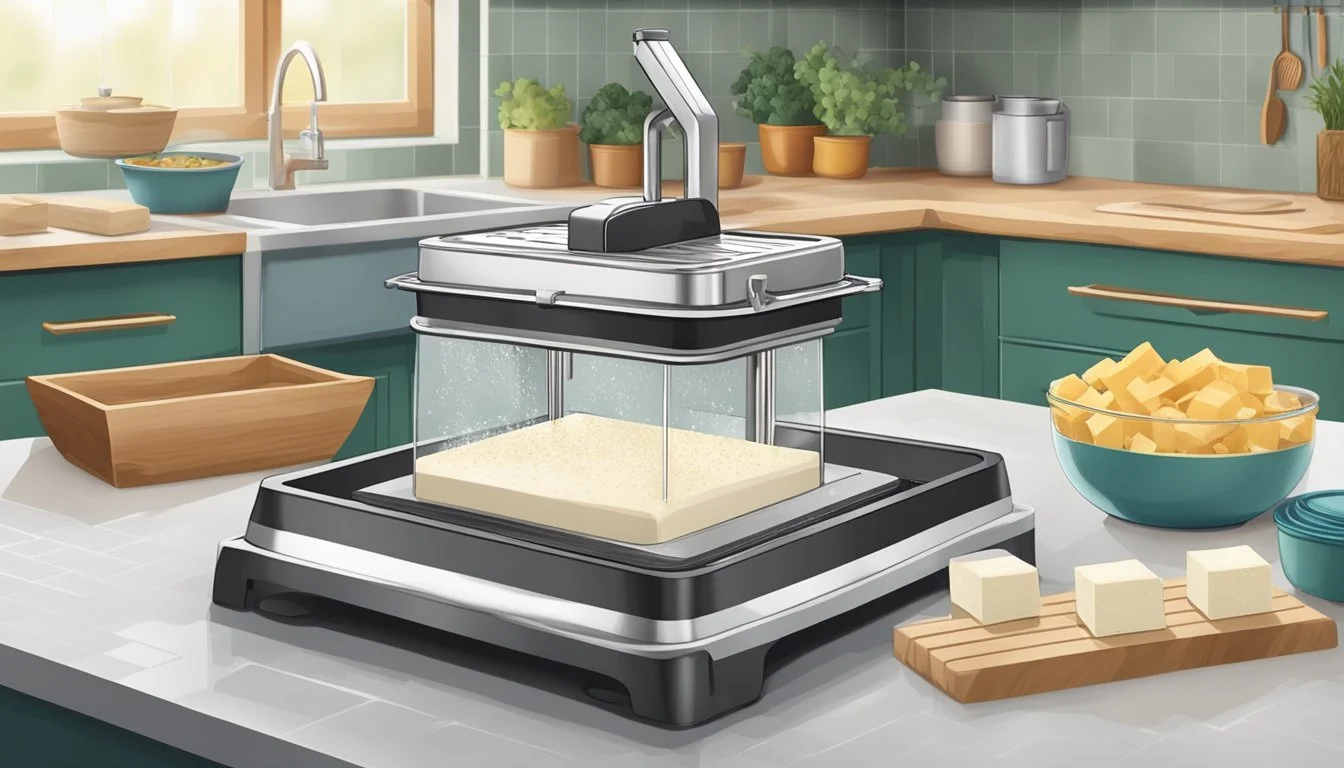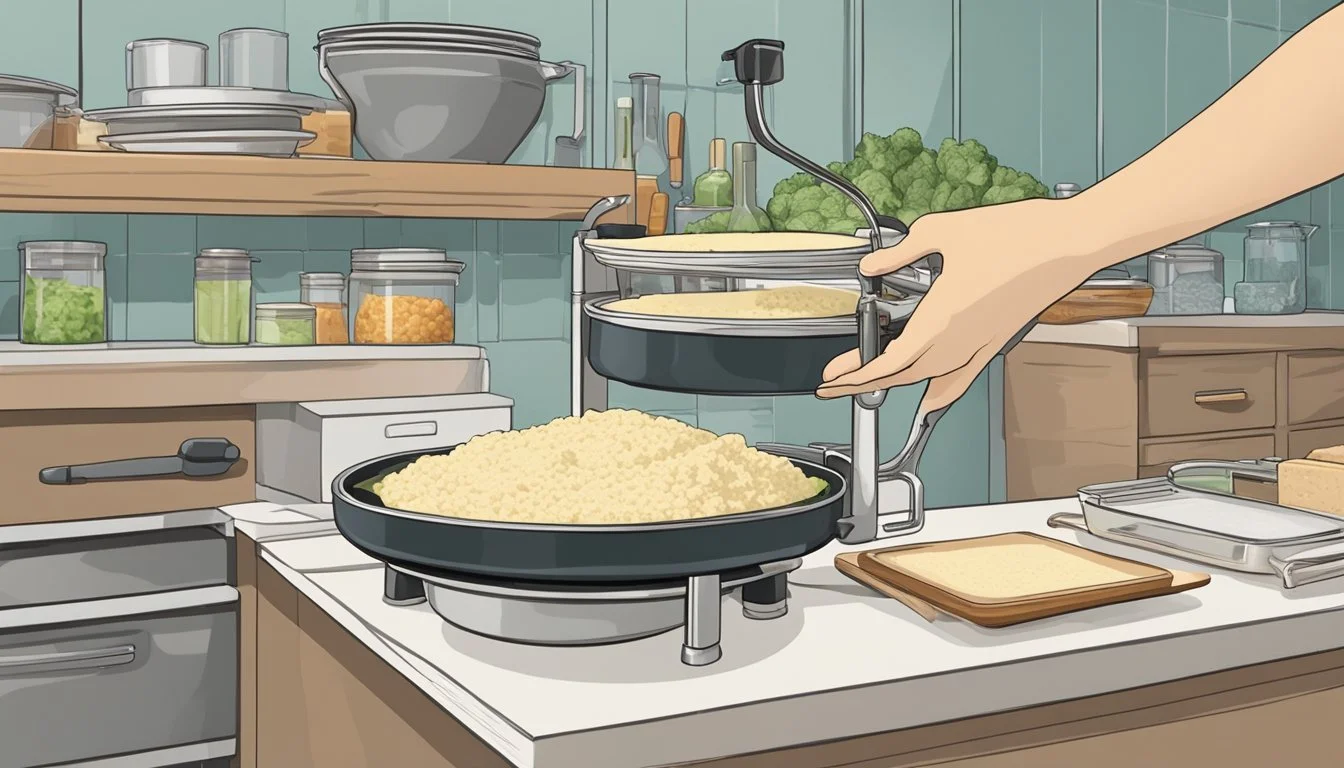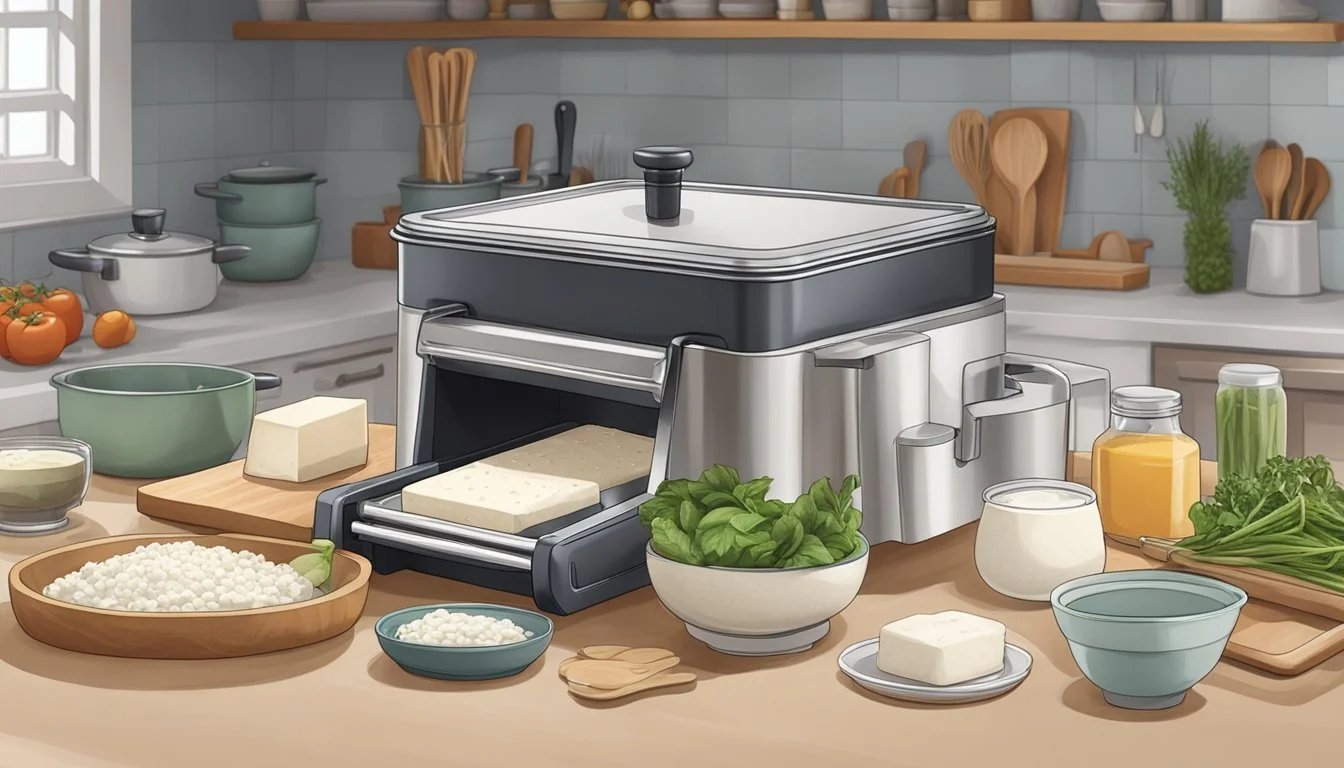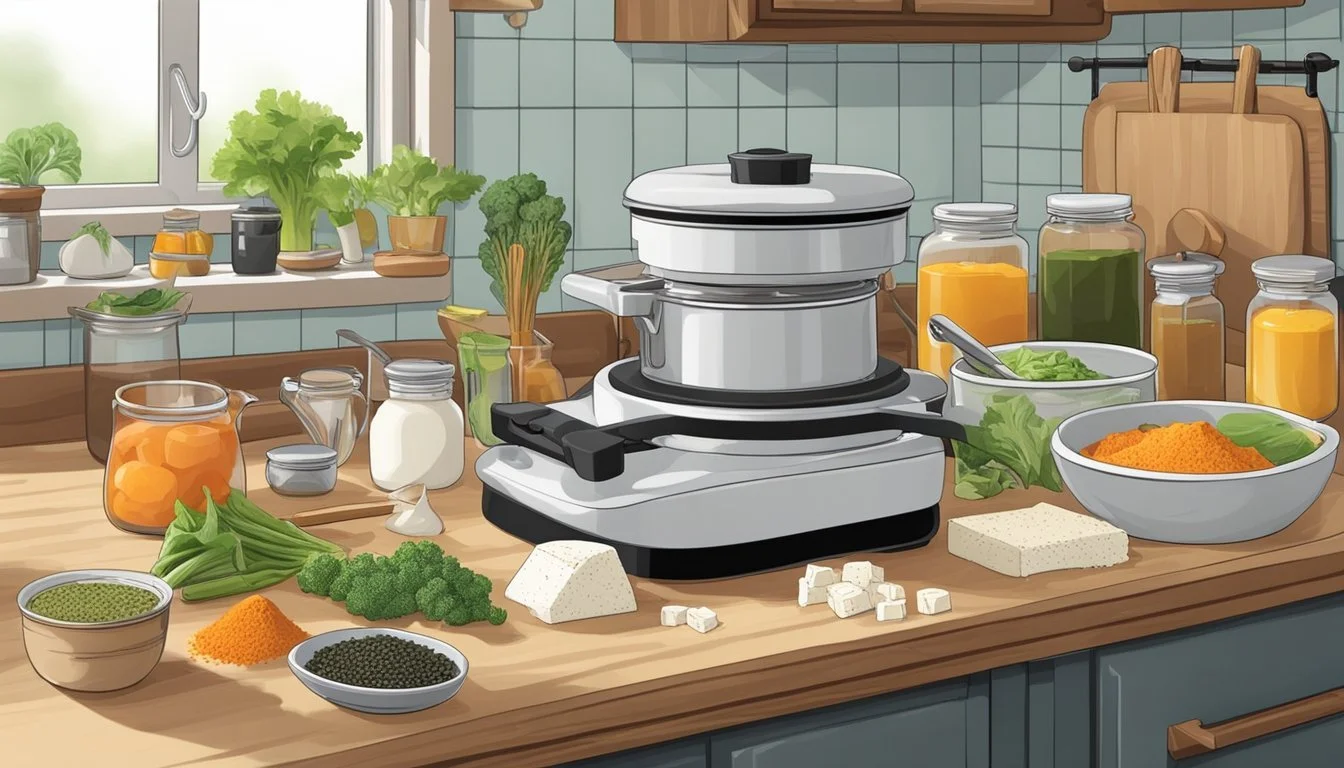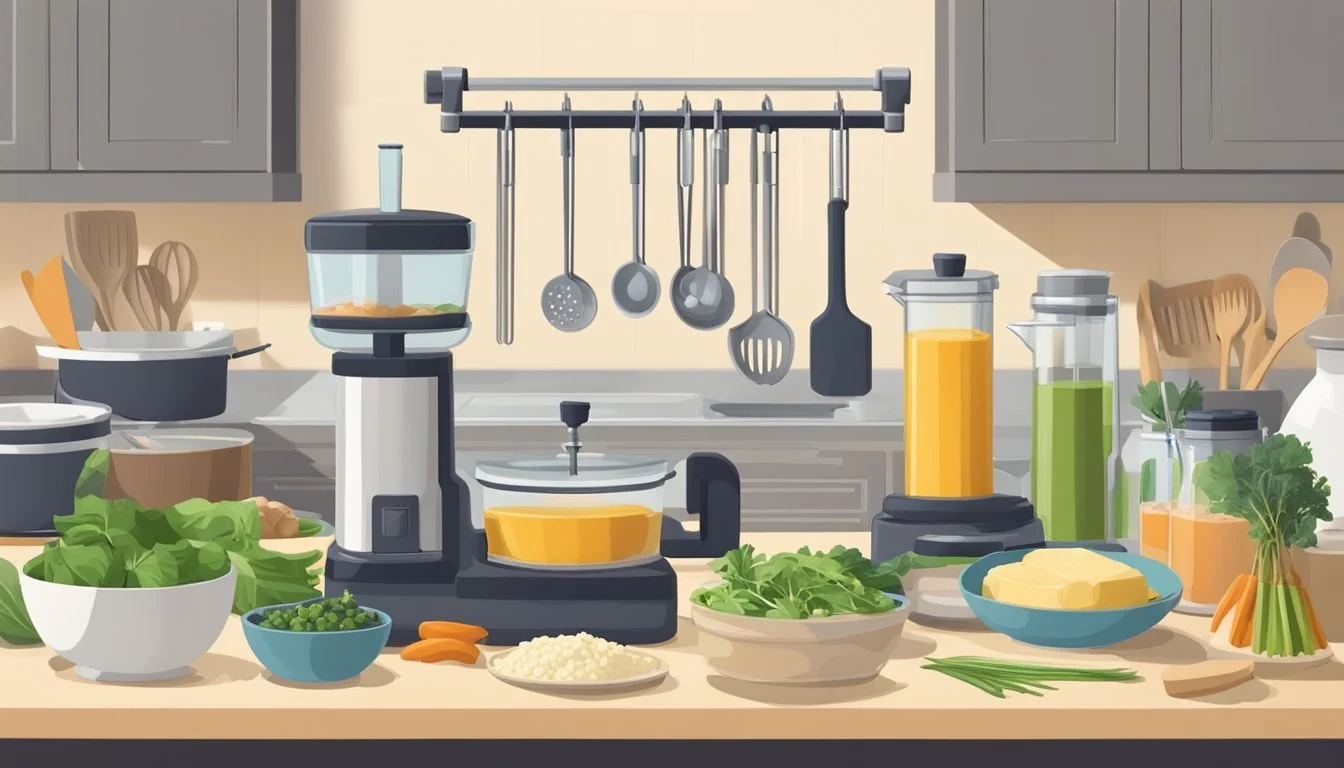How to Organize Your Kitchen for a Dinner Party with a Tofu Press
Streamlined Setup Tips
Organizing a kitchen for a dinner (What wine goes well with dinner?) party requires both strategic planning and the right tools for efficient meal preparation. When the menu includes versatile plant-based options such as tofu, one essential gadget is the tofu press. Tofu, a staple in many vegetarian and vegan diets, has a high water content that, when drained, provides a better texture and allows the tofu to absorb flavors more effectively. Utilizing a tofu press not only speeds up the process but also ensures even pressure and consistent results.
The art of pressing tofu begins with the removal of tofu from its package, draining any excess liquid before placing it in the tofu press. An effective press is adjustable to accommodate different block sizes and applies gentle but firm pressure evenly across the tofu. This ensures any excess moisture is removed without compromising the integrity of the block. For individuals who do not have a conventional tofu press, improvised methods with weighted plates and absorbent towels can also yield satisfactory outcomes, although typically not as uniform or efficient as using a press designed for the task.
With the tofu pressed and its texture optimized for cooking, it can be incorporated into a variety of recipes that will impress dinner guests. Whether it be as a main, paired with spices and vegetables, or as a complement to other dishes, properly pressed tofu elevates the eating experience with its enhanced ability to take on the rich flavors of the accompanying ingredients. Hence, when organizing the kitchen for a successful dinner party, factoring in time for tofu pressing is crucial for those aiming to showcase plant-based dishes at their culinary best.
Understanding Tofu Varieties
When organizing a kitchen for a dinner party, one must consider the variety of tofu available as it directly influences the meal's preparation and presentation methods. Tofu, also known as bean curd, offers distinct textures and firmness levels suitable for various dishes.
Firm and Extra Firm Tofu
Firm tofu is dense and holds its shape well, making it ideal for grilling, frying, and baking. Extra firm tofu, with its higher density, is perfect for those dishes needing a substantial bite and can withstand vigorous cooking methods without falling apart.
Texture: Smooth, holds together well
Uses: Grilling, stir-frying, baking
Preparation Tip: Pressing is recommended to expel excess moisture for a better texture.
Silken and Soft Tofu
Silken tofu possesses a creamy, custard-like consistency, and it blends seamlessly into smoothies and desserts. It is delicate and requires careful handling. Soft tofu is slightly more cohesive than silken but still tender, and works well in soups and soft scrambles.
Texture: Creamy and smooth for silken; tender for soft
Uses: Soups, sauces, smoothies, and desserts
Preparation Tip: Minimize handling to prevent breakage. Not recommended for pressing.
Medium and Super Firm Tofu
Medium tofu is versatile with a balance between soft and firm textures, a good middle-ground choice for dishes needing a softer profile without complete disintegration. Super firm tofu, being the most dense, often does not require pressing and is ready for use straight out of the package.
Texture: Spongy for medium; very dense for super firm
Uses: Baking, stir-fries, and as a meat substitute for super firm; medium performs well in lightly cooked dishes
Preparation Tip: Medium tofu benefits from gentle pressing; super firm is typically press-free.
The Importance of Pressing Tofu
When preparing tofu, pressing it is not merely a preliminary step; it is critical to its culinary success. This process directly affects the tofu's texture and its ability to absorb flavors from marinades, making it a centerpiece at any dinner party.
Texture and Flavor Enhancement
Pressing tofu significantly improves its texture, transforming it from its original sponge-like state to a firmer, more palatable consistency. An enhanced texture increases the tofu's versatility, allowing it to be the star in a variety of dishes ranging from crisp stir-fries to hearty grills. Moreover, a firmer texture enables tofu to hold and embody flavors more effectively, turning it into a flavorful component that complements other elements of a meal.
Removing Excess Moisture
The act of pressing tofu is critical for removing excess moisture. Tofu straight out of its packaging is filled with water, which dilutes potential flavors and affects its cooking performance. By applying a gentle, even pressure, either manually or with a tofu press, the unwanted liquid is expelled, ensuring the tofu won't crumble during pressing. This not only creates a better texture but also prevents the tofu from releasing water during cooking, which can interfere with achieving a crispy exterior.
Marinating Efficiency
Well-pressed tofu is an ideal canvas for marinades. Without excess water, marinades penetrate the tofu's surface more effectively, distributing the flavor throughout its entirety. This heightened efficiency in marinating is essential for adding depth and complexity to the tofu, making it a more enjoyable and flavorful part of the dining experience. It ensures that every bite is infused with the intended flavors of the dish, whether it's a savory soy sauce or a bold barbecue glaze.
Selecting a Tofu Press
When organizing your kitchen for a dinner party, a tofu press is an essential tool for preparing firm and flavorful tofu dishes. The type of tofu press one selects should balance functionality with ease of use and maintenance.
Manual Presses
Manual presses are typically designed with a simple lever mechanism that one depresses to remove excess moisture from the tofu block. EZ Tofu Press is a popular example of a manual press known for its straightforward design. These presses are favored for their sturdiness and are often made of durable materials like stainless steel, making them sustainable and easy to clean. Most are also dishwasher safe, adding to their convenience.
Screw Presses and Tension Presses
Screw and tension presses utilize a tightening method to gradually exert pressure on the tofu. Users turn the screws or twist the knobs to increase tension, which allows for precise control over the pressing process. The materials used for these presses vary, but high-quality models are crafted to be long-lasting and easy to clean. When selecting a screw press, ensure that it is made of non-corrosive materials such as stainless steel or BPA-free plastic.
Household Alternatives
For those who do not have a specialized tofu press, household alternatives can be improvised. A weighted plate setup, using a flat plate on top and bottom of the tofu wrapped in clean kitchen towels, can mimic the pressing effect. For this method, heavy objects such as books or cans are placed on top to apply the necessary pressure. While this does not offer the same precision as a dedicated tofu press, it can be a temporary solution for those who prioritize sustainability and minimalism in their kitchen tools.
Preparing to Press Tofu
Before a dinner party, making sure your tofu has the perfect texture is essential. The key to perfectly pressed tofu lies in a thoughtful setup and choosing the right materials.
Setting Up the Pressing Area
First, one should designate a clean, flat surface in the kitchen for the tofu press. This can be a section of the countertop protected with a cutting board to prevent slippage and to capture any runoff liquid. Ensure there is enough space to place a collecting container or kitchen towels beneath the setup to absorb the drained liquid from the tofu.
Preparing the Tofu Block
To prepare the tofu block for pressing, remove it from its packaging and drain any excess liquid over the sink. If a tofu press is not available, one can wrap the tofu block in several layers of paper towels to absorb moisture. This step is crucial for easier handling and to facilitate the removal of excess water during pressing.
Choosing Weights and Materials
If using a tofu press, follow the instructions to adjust it for the size of your tofu block. For those without a press, they can place the wrapped tofu block on the cutting board and evenly distribute a weight on top. A cast iron pan or a weighted bamboo cutting board can serve as an effective weight. The key is to apply steady pressure without causing the tofu to crumble.
The Pressing Process
Achieving the ideal tofu texture for a dinner party involves a careful pressing process, ensuring the tofu has the firmness and consistency desired for the evening's dishes.
Duration and Techniques
The duration of pressing tofu significantly impacts its texture. For a firm and dense texture suitable for most recipes, one should press tofu for at least 30 minutes. Some recipes may benefit from longer pressing times, up to an hour or more, to extract more moisture and achieve an even firmer consistency. It is essential to use a tofu press, evenly distributing weight over the tofu and avoiding warping or uneven firmness.
Techniques for pressing tofu:
Place tofu in the press.
Gradually increase the pressure to avoid splitting the block.
Maintain a consistent press for the full duration.
Monitoring and Adjusting Pressure
Throughout the pressing process, one should periodically check on the tofu to ensure that it is pressing evenly and the pressure remains adequate. If the tofu is not firming up as expected, the pressure may need a slight increase. Care should be taken not to apply too much force, leading to crumbling.
After Pressing: Handling Pressed Tofu
Once the tofu has been pressed for the necessary time, one must handle it with care to maintain the newly achieved texture. When removing tofu from the press, do so gently and prepare it according to the recipe in use. Pressed tofu offers a firm texture that holds up to marinating, baking, or frying, making it a versatile and desirable component for a successful dinner party.
Incorporating Pressed Tofu Into Recipes
Once tofu has been pressed to remove excess water, it is primed to absorb an array of flavors and take on a delectable texture that can elevate any recipe. This section delves into how to effectively integrate pressed tofu into dishes, ensuring maximum taste and ideal consistency.
Creating Flavorful Marinades
To infuse tofu with robust flavors, one must begin with a well-composed marinade. Key components of a marinade typically include:
Acids: such as lemon juice or vinegar, to tenderize.
Sauces: like soy sauce or tamari, for a depth of flavor.
Oils: olive or sesame oil to carry flavors into the tofu.
Seasonings: such as garlic, ginger, or herbs, to enhance taste.
Sweeteners: a touch of maple syrup or sugar to balance.
A tofu marinade can range from Asian-inspired, with soy sauce and sesame oil, to a barbecue profile with smoked paprika and tomato paste. For best results, tofu should marinate for at least 30 minutes and up to a few hours for deeper flavor infusion.
Cooking Methods for Crispiness
The goal of achieving crispy tofu hinges on the cooking method. Three effective methods include:
Pan-frying: Cooking marinated tofu slices in a hot skillet with a small amount of oil until each side is golden and crispy.
Baking: Placing marinated tofu on a lined baking sheet in a preheated oven, typically around 350°F (175°C), flipping halfway through.
Air-frying: Cooking tofu in an air fryer, where hot air circulates to create a uniformly crispy exterior.
Each method demands attention to the tofu’s surface moisture before cooking. A dry tofu surface ensures better crispiness.
Enhancing Plant-Based Dishes
Pressed tofu is a versatile component in vegan recipes. It can be crumbled to mimic ground meat, cubed for stews, or sliced for stir-fries. Tofu's blandness is its strength, readily absorbing spices, sauces, and seasonings. Combining spices like turmeric, cumin, and coriander can give a distinctive flavor profile suitable for various cuisines.
The integration of tofu into vegan recipes not only enhances the dish's protein content but also its texture and ability to carry a dish’s signature flavors. Whether it's in spicy tofu tacos or a creamy vegan Alfredo sauce, pressed tofu adapts to complement the primary ingredients of the recipe.
Additional Tofu Techniques
When preparing tofu for a dinner party, one can adopt techniques that enhance its flavor and texture, making it a stand-out element on the menu.
Freezing and Thawing for Texture
Freezing tofu can dramatically change its texture. Store-bought tofu typically comes in a water-packed form, which is ideal for freezing. Freezing creates ice crystals within the tofu, which results in a firmer and chewier texture upon thawing. The steps are simple:
Drain the tofu well.
Slice the tofu into the desired thickness.
Place the slices on a tray, ensuring they do not touch.
Freeze for at least 12 hours.
Thaw in the refrigerator before use.
This method is particularly beneficial for dishes where a firm texture is desired, giving the tofu a meatier bite that holds up better to cooking methods like frying or grilling.
Tofu As a Meat Alternative
Tofu is a versatile plant-based protein that can stand in for meat in many recipes. When using tofu as a meat alternative, it is essential to season it well, as tofu has a mild flavor that absorbs spices and marinades. The following steps should be taken to maximize flavor:
Press the tofu to remove excess liquid, enhancing its ability to absorb marinades.
Marinate for at least 30 minutes, or longer for more depth of flavor.
Cook using the same method you would with meat, whether it's sautéing, grilling, or baking.
By treating tofu as one would a cut of meat, it becomes a satisfying plant protein that can appeal to vegetarians and meat-eaters alike, adding a wholesome variety to the dinner party menu.
Cleaning and Maintenance
Proper care for a tofu press and timely kitchen clean-up are fundamental steps to maintain hygiene and functionality in a kitchen, especially before hosting a dinner party.
Tofu Press Care
When it comes to the tofu press, ensuring its longevity is all about proper maintenance. If the tofu press is dishwasher safe, it simplifies cleaning considerably. One can place it on the top rack, away from any heating elements, to prevent warping. However, if the press is not dishwasher safe, hand-washing with warm, soapy water immediately after use will keep it sanitary and in good condition. Dry it thoroughly to prevent any potential buildup of mold or mildew.
Kitchen Post-Use Clean-Up
After the dinner party concludes, the kitchen clean-up should be systematic to ensure efficiency. A checklist helps break down the tasks:
Countertops and Surfaces: Wipe down with a disinfectant or a natural cleaner like diluted vinegar, especially after handling the tofu press or other kitchen gadgets.
Sink and Faucets: Use dish soap and a scrub brush; a microfiber cloth can shine surfaces without scratching.
Floors: Sweep to remove debris, then mop with an appropriate cleaner to remove any spills or stains.
Refrigerator and Appliances: Wipe the exterior with a soft cloth and a gentle cleaner suitable for the appliance surface.
Kitchen gadgets and utensils should be cleaned promptly. Items often marked "easy to clean" should be hand-washed or placed in the dishwasher according to manufacturer instructions, paying attention to any specific areas where food residue may accumulate. Regular maintenance not only ensures ease of use for the next gathering but also extends the life of the kitchen tools.
Organizing Your Kitchen for the Dinner Party
When hosting a dinner party, an organized kitchen is crucial for both functionality and presentation, especially when incorporating unique elements like a tofu press for serving creative plant-based dishes.
Layout and Accessibility
The key to a smoothly functioning kitchen during a dinner party lies in the thoughtful layout and accessibility. One should ensure that plates and flat plates are stacked neatly in an accessible area, close to the serving zone to facilitate quick plating and distribution of dishes. Canned goods should be stored in the pantry by type and frequency of use, with those needed for the party at eye level for easy reach. For a clutter-free workspace that maintains a minimalist look, lesser-used items like the cookie sheet or cast iron skillet can be stored in lower cabinets or hung neatly on wall hooks. Keeping essential tools like the heavy pot within arm's reach of the stove can save time and effort during cooking.
Kitchen towels should be plentiful and conveniently placed both for the cook’s use during preparation and for guests in case of spills. An organized kitchen allows the host to move with confidence, knowing each item is precisely where it needs to be.
Serving Tofu Creatively
Utilizing a tofu press, the host can offer guests beautifully presented tofu dishes that break from the ordinary. After pressing and draining the tofu, it should be displayed on a series of bold serving platters to enhance appeal. For a creative twist, one might carve the tofu with designs before pressing, which will not only create an interesting visual but also help to better hold sauces and seasonings. A presentation featuring a range of sauces in small bowls, each placed beside a beautifully arranged flat plate with pressed tofu, invites guests to experience the variety of flavors and the quality of well-prepared tofu dishes. It's this attention to detail and presentation that can turn a simple ingredient into a dinner party highlight.
Tofu FAQs for Guests
When hosting a dinner party that features tofu, guests may have questions about its nutritional benefits and how it fits into various dishes. This section offers concise answers to common inquiries.
Nutritional Benefits
Tofu is a versatile soy-based product that's known for its protein content, making it a popular choice for vegetarians and vegans. Here are the primary nutritional facts:
Protein Source: Tofu is an excellent source of protein, essential for muscle building and repair.
Low in Calories: It's relatively low in calories, aiding in weight management.
Mineral Rich: Tofu contains valuable minerals such as calcium and iron.
The protein and mineral content of tofu make it a nutritious addition to any meal, from stir-fries to curries.
Common Questions and Concerns
Guests often have a range of questions about tofu's preparation and culinary uses. Responses should be straightforward and informative.
Excess Liquid: Before cooking, tofu should be pressed to remove excess liquid, which helps it better absorb flavors and improves texture.
Tofu Press Usage: A stainless steel tofu press can expedite this process and is a useful tool to have on your countertop.
Cookbooks: For those interested in exploring various tofu recipes, a variety of cookbooks are available, offering guidance on its use in dishes like stir fries and curries.
Countertop Care: When using a tofu press on the countertop, ensure any drained excess water is caught to maintain cleanliness.



